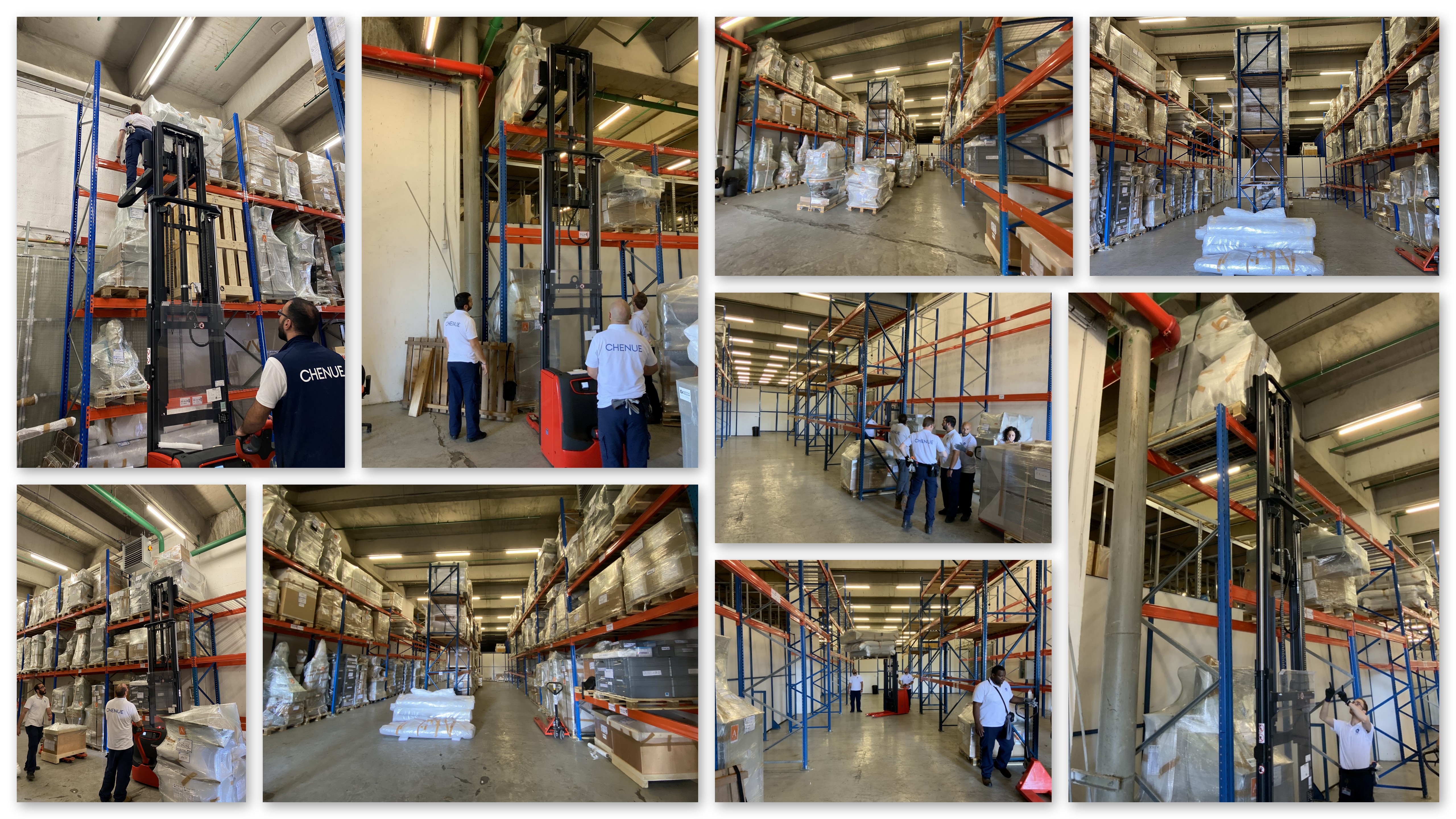
 Museum
Museum
Pasteur Museum: transferring the collections to protect them
As part of the work to restore and renovate the Institut Pasteur's historical building, the Pasteur Museum recently embarked on an unprecedented process to transfer its collections, following the collection review.
See the video about the collection review
![]() Why transfer the collections in the Pasteur Museum?
Why transfer the collections in the Pasteur Museum?
Since the building is undergoing significant work, it is crucial to move the collections, both to safeguard them and for practical reasons. The aim of the transfer is not just to preserve the cultural artifacts from potential damage but also to facilitate the work to refurbish the interior of the historical building.
Moving a museum's collections is an extraordinary and complex process, in terms of both logistics and conservation.
We take a look back at this unprecedented undertaking.
![]() First step: preparing for the collections to be removed
First step: preparing for the collections to be removed
Since the collections could not all be stored on the Institut Pasteur site, the Institut Pasteur contacted the company Chenue, which specializes in the transportation and storage of museum collections. The major advantage of the storage spaces made available by this company is that they are located in the Greater Paris region, meaning that they are still within easy access for the museum team throughout the renovation period, which will last for approximately four years, from 2024 to 2027.
The collections were meticulously packed by the transporters from Chenue, who specialize in handling works of art, then carefully packaged and labeled under the supervision of Stéphanie Colin, in charge of collections at the Pasteur Museum. This labeling guarantees the traceability of the cultural objects.
Around 20 Chenue trucks, each with a capacity of 45 to 50m3, transported the collections to a temporary storage space in Le Bourget.
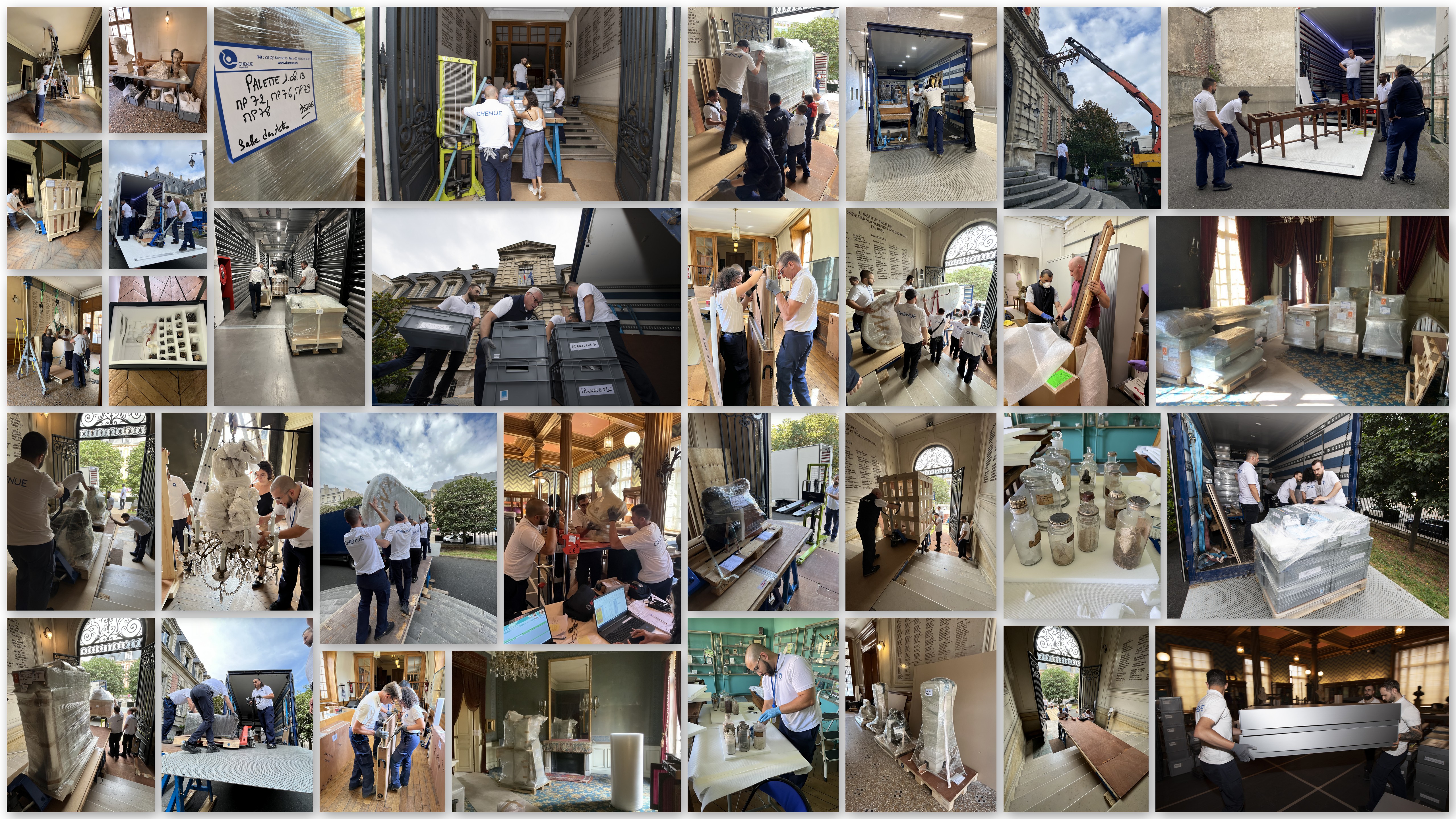
![]() Second step: anoxic treatment for collections containing organic materials
Second step: anoxic treatment for collections containing organic materials
Some artworks and objects from the museum had to undergo an additional stage prior to storage, known as anoxic treatment. This is a disinfestation treatment involving the removal of oxygen.
During this process, the objects are placed in airtight enclosures or sealed bags. The oxygen level is mechanically lowered to 0% by injecting nitrogen to replace it. The aim is to eliminate any insects that might get into the objects and damage them. The treatment is only required for collections that contain organic materials (wood, paper or textiles), as it is these collections that may be infested. After being deprived of oxygen for 21 days, no insects in the objects – whether eggs, larvae, pupae or adults – are able to survive. The treatment is performed in stable temperature and humidity conditions to avoid any negative impact on the items, such as the development of mold or the swelling of wood or textile fibers.
A total volume of 224m3 of collections was given anoxic treatment for preventive reasons before being transferred to the storage space.
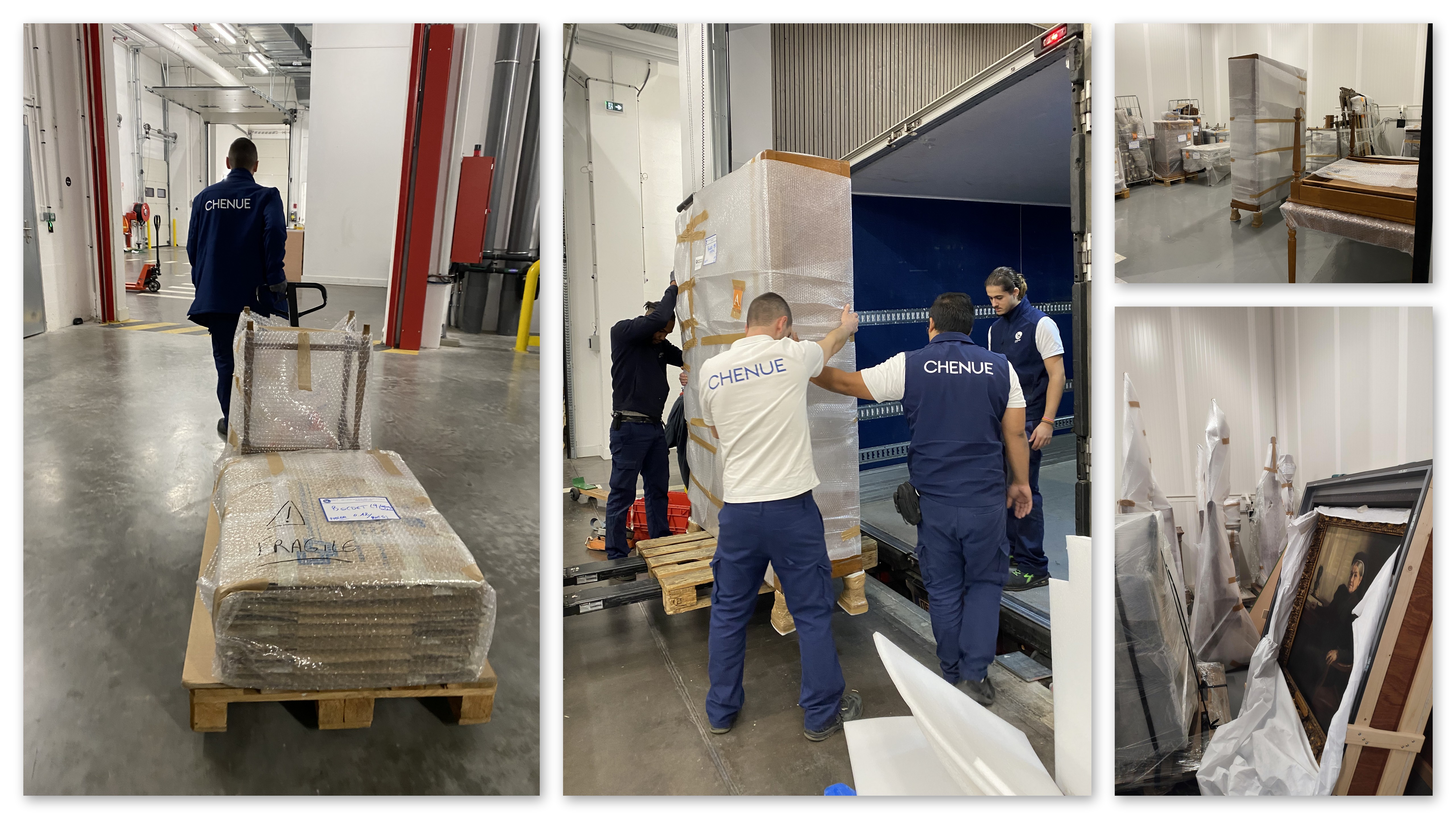
![]() Third and final step: installing and organizing the collections and adding location codes
Third and final step: installing and organizing the collections and adding location codes
The final stage of the transfer was to install and organize the collections in Chenue's storage spaces.
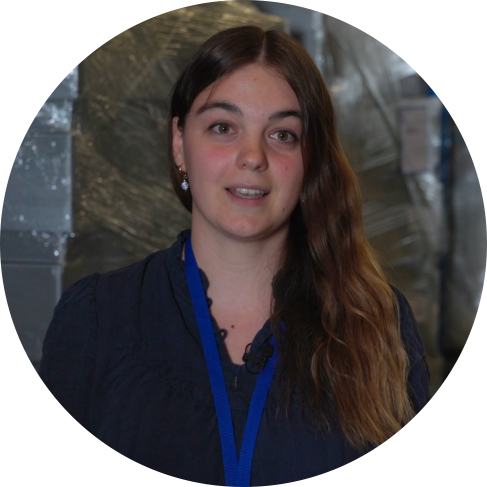 "After transporting them, they were labeled with a location code: a number was given to each pallet or object placed on a specific rack. The number was noted in a table which was progressively filled out by the collection manager as the items were moved to keep track of every object. The items must remain accessible in case we need to restore them or organize a move to another museum," explains Emma Leprêtre, collection manager for the Pasteur Museum.
"After transporting them, they were labeled with a location code: a number was given to each pallet or object placed on a specific rack. The number was noted in a table which was progressively filled out by the collection manager as the items were moved to keep track of every object. The items must remain accessible in case we need to restore them or organize a move to another museum," explains Emma Leprêtre, collection manager for the Pasteur Museum.
The items had to be organized in a way that made the best use of the available space and, more importantly, that took account of the nature of each item.
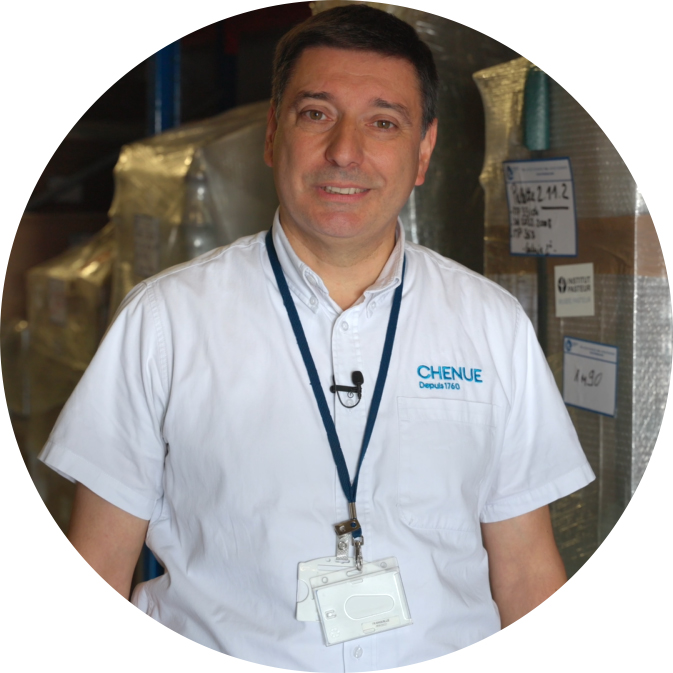 "We stacked lighter items on racks, and we avoided storing heavy materials high up; they were kept on the floor," explains Jérôme Tranquille, Chenue's head of conservation sites in Paris and Greater Paris.
"We stacked lighter items on racks, and we avoided storing heavy materials high up; they were kept on the floor," explains Jérôme Tranquille, Chenue's head of conservation sites in Paris and Greater Paris.
A total of 400m3 of collections are now in storage in Chenue's spaces, in full compliance with museum conservation conditions, and they remain accessible to the Pasteur Museum team during warehouse opening hours.
![]() What next?
What next?
The collection transfer was completed in mid-November 2023. It was carried out within the planned time frame without any hitches. Mission accomplished for the museum team.
 "It is quite emotional to see the museum being emptied out," admits Stéphanie Colin. "It sounds silly but we get attached to the collections and it's tough to see them go. They have never moved as much as this! But when one door closes, another opens, and we are proud to be able to accompany our collections on this journey. I am not at all worried – Chenue is taking great care of them."
"It is quite emotional to see the museum being emptied out," admits Stéphanie Colin. "It sounds silly but we get attached to the collections and it's tough to see them go. They have never moved as much as this! But when one door closes, another opens, and we are proud to be able to accompany our collections on this journey. I am not at all worried – Chenue is taking great care of them."
This transfer is the first stage in the museum renovation process. The collections will be returned to the museum at the end of 2027 once the building work has been completed.
Packaging and labeling: preparation of an item to be sent as a package, complete with detailed information
Packing: careful preparation of artworks and items in museum collections to avoid any deterioration while they are being transported
Anoxia (anoxic treatment): total absence of oxygen
Rack: in logistics, a structure used to store goods in a storage space
Stack: store at a height
Location coding: referencing works in collections using a precise coding system (rack, height, etc.)
Photos: Institut Pasteur - François Gardy
